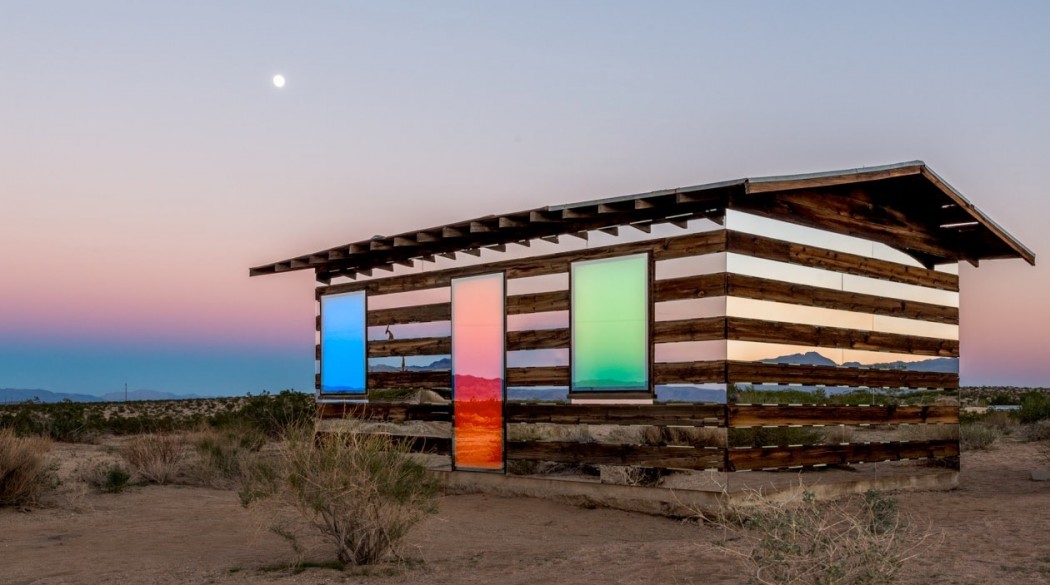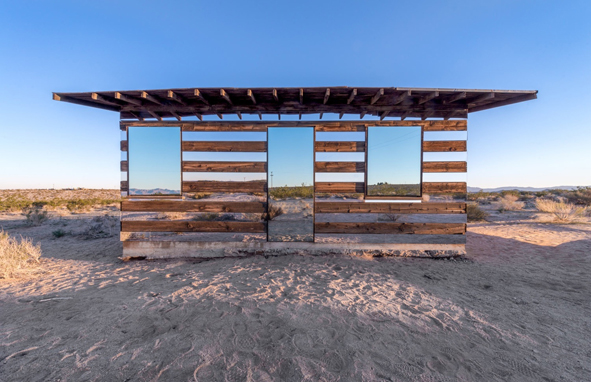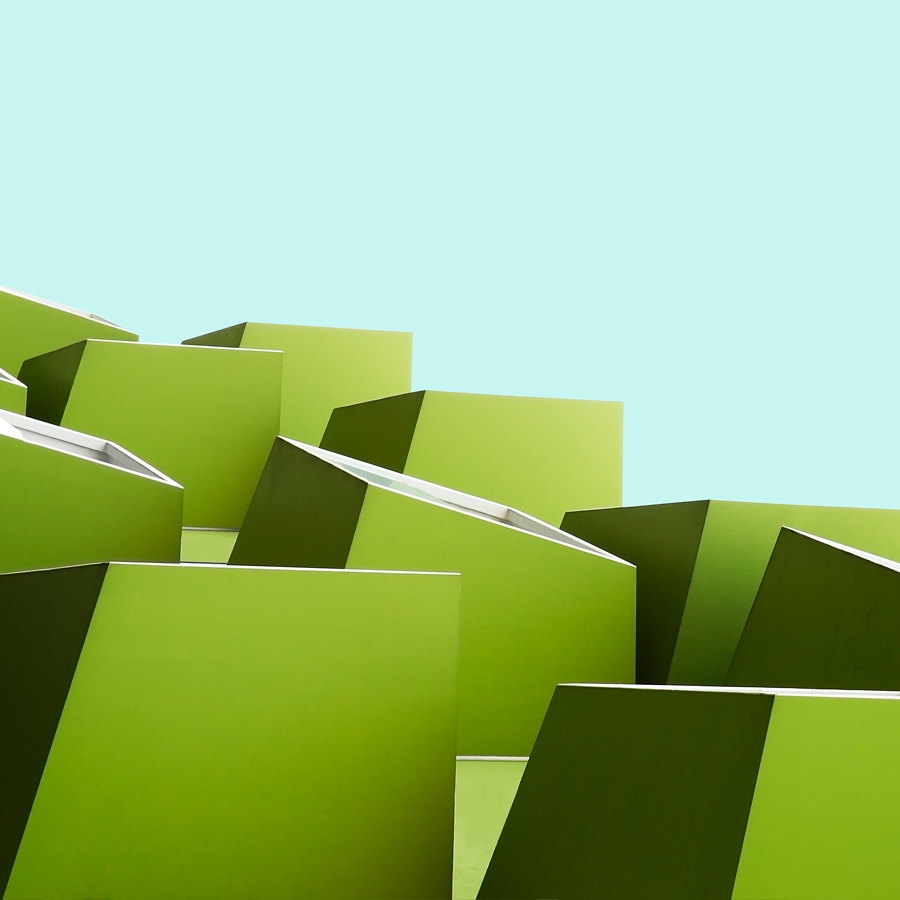Installations that interact with nature and depend on it. By the rays of light, by the breath of the wind. Light that produces energy for plants, and plants that generate light for long exposure photos. Wind that modulates the sounds of a harp, generating a metaphysical music, and reveals the whisper of hundreds of bicycle bells lying on a lawn. Mirrors that reflect the natural light in all its changes during the day, creating an aesthetic metamorphosis in an object that is actually always the same.
This is Supernature
NICOLA TOFFOLINI: “POLYPHONIC ENVIRONMENTAL CYCLE FOR CLAUSTROPHOBIC PLANTS”
The piece consists of two cultivated cells, arranged parallel to each other, which are self-sufficient in terms of energy. The energy produced by the external artificial light shining on the case is recovered by a simple technical apparatus with a small solar panel and is converted into a beam of additional light that is conveyed directly onto the plant.
The spectrum of light produced – blue in one case, red in the other – interferes with the development of the plants and has a different effect on their growth in the two separate environments.

The american artist uses nails inside fruit connected with copper wire to create functional batteries. Harnessed to a small lightbulb, the current is enough to provide illumination for long exposure photographs. The organic batteries create enough voltage to illuminate them.

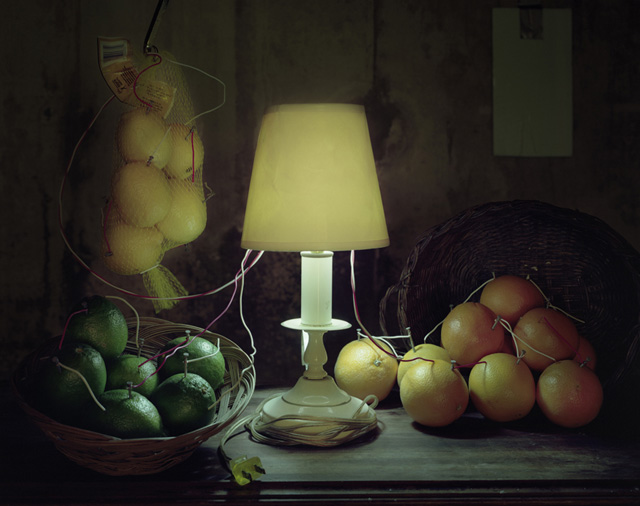
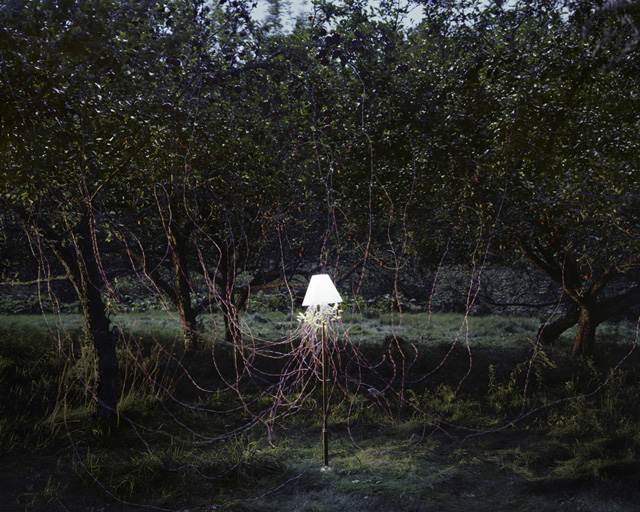
RONALD VAN DER MEIJS: “SOUND ARCHITECTURE 5”
An installation of 5,000 bicycle bells on a bed of moss. The higher bells will sound by a strong breeze and in autumn the installation will be played by the falling acorns of an nearby Oak tree which is hanging high above the installation.
The whole idea is to start somewhere in nature and let it flow while working on it. The structure and composition react on the shape of the landscape and the trees of the garden.
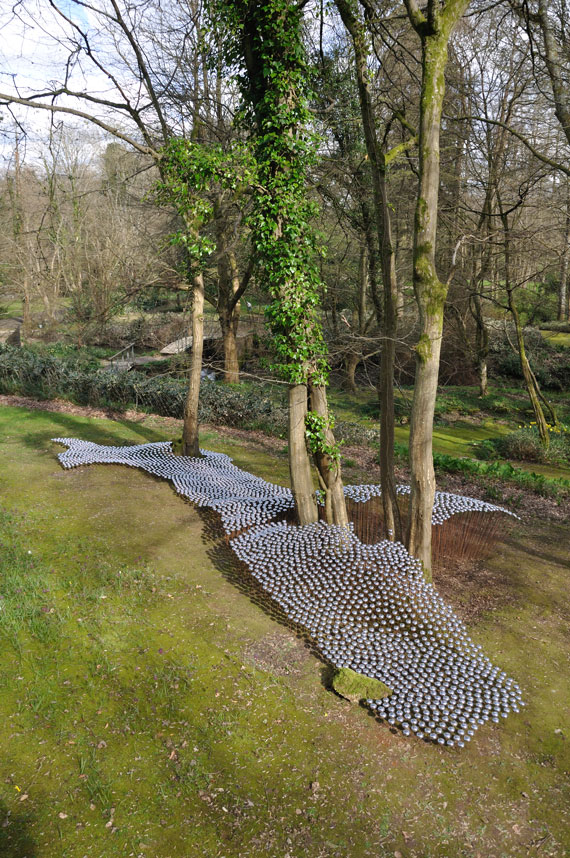

MATTEO NASINI: “CENTOCORDO”
The work is a sound sculpture that evokes the image of a window, at once ideal and real, facing the Mediterranean. It has a double set of chords that are stretched between the front and back of the installation and played by the wind. The first set of chords, facing the sea, is tuned to the sequence of the Arab scale, while the second, facing the land, is tuned according to the principles of European harmonics.
“My project is based on the idea of subverting this colonial relation, rereading it from a perspective opposed to the actual historical dynamics. The aim is to construct an instrument of union between the different cultures by taking an element capable of physically going beyond these two worlds – the wind – and transforming it into a universal language: sound.”
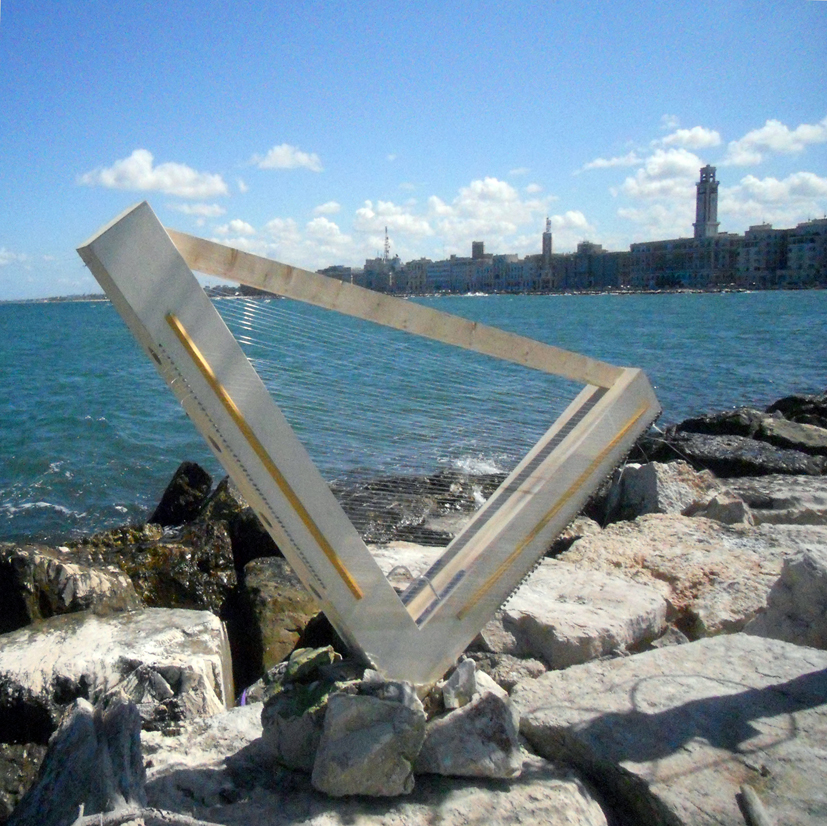
PHILIP K. SMITH III: “LUCID STEAD”
Composed of mirrors, LED lighting, custom built electronic equipment and Arduino programming amalgamated with a preexisting structure, this architectural intervention, at first, seems alien in the context of the bleak landscape.
Upon further viewing, Lucid Stead imposes a delirious, almost spiritual experience. Like the enveloping vista that changes hue as time passes, Lucid Stead transforms. The old shack, that serves as the armature of the piece, reflects and refracts the surrounding terrain like a mirage or an hallucination. As the sun tucks behind the mountains, slowly shifting, geometric color fields emerge until they hover in the desolate darkness.
This transformation also adapts personal perception, realigning one’s sensory priorities. A heightened awareness of solitude and the measured pace of the environment is achieved.
EDITOR’S NOTE: The opinions expressed here by Impakter.com columnists are their own, not those of Impakter.com. Silvia di Paolo / Supernature


